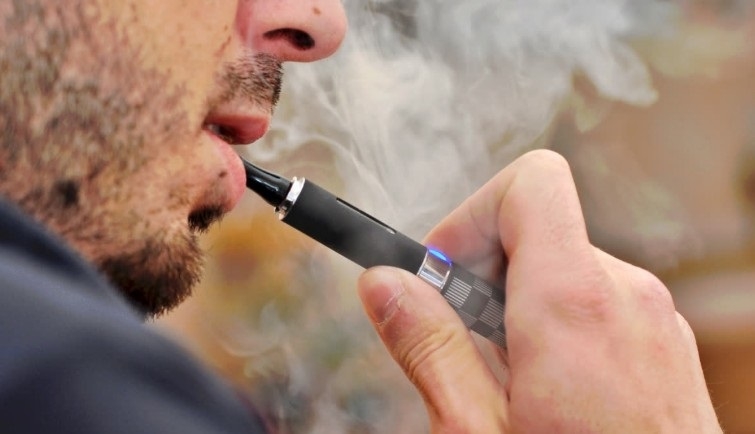World No Tobacco Day: How the Tobacco Industry is Targeting the Next Generation and Getting Them Hooked
Total Views |

Let us begin, as all good horror stories do, with a seemingly harmless puff. A drag of a cigarette — perhaps stylishly perched between two fingers, perhaps laced with rebellion — and then poof! You are in. It doesn’t ask for consent. It doesn't care if you're 16 or 60.
May 31 is when humanity collectively steps out of the smoke and attempts a deep breath to mark World No Tobacco Day. Created in 1987 by the World Health Organization (WHO), the day was born out of a need to say, “This is not fine.” After all, the first World No-Smoking Day in 1988 (as per Resolution WHA40.38) was quickly rebranded to the more inclusive No Tobacco Day. A fair choice, considering Big Tobacco never really stopped at just cigarettes.
The Tobacco Industry Never Sleeps
This year’s theme “Bright products. Dark intentions. Unmasking the Appeal” targets one of the sneakiest tactics used by tobacco companies today. Sleek, vibrant packaging, watermelon-flavoured e-cigarettes, exotic hookah bars and ads that make a puff look like self-care. It’s like selling rat poison in a perfume bottle. The WHO says: Stop letting the industry seduce gullible children and teens with lies. Every day, nicotine pushers unleash flavour-loaded traps, creating an illusion of safety wrapped in menthol and bubblegum.
“The government banned vaping and e-cigarettes by law because it has seen from its own data that most of the users who are being affected by vaping are teenagers who are in schools and colleges. Being a mother myself, I am aware that vaping is rampant and the habit leaves a strong impact among teens and youth. They are attracted to these devices because they are promoted as a luxury, a style statement with the narrative that it is neither harmful nor punitive,” said Padma Jaiswal - IAS, Secretary to the Government of the Union Territory of Puducherry at a seminar by Mothers Against Vaping.
India’s Smoke Signals
Tobacco use remains one of the leading preventable causes of death worldwide. Each year, it kills over 8 million people, more than malaria, HIV, and tuberculosis combined. That’s like wiping out the entire population of a city like Bangalore. Every single year. But it’s not just about the smokers. Secondhand smoke claims over 1.2 million lives annually.
India has, to its credit, made significant strides. Tobacco smoking prevalence has plummeted from 29% in 2000 to an estimated 6% in 2025, according to a WHO global report. Under the WHO's Global Action Plan for the Prevention and Control of Non-Communicable Diseases (NCD GAP), there's a target of cutting tobacco use by 30% by 2025. India’s ambition aligns with this... with even bolder steps like banning e-cigarettes outright and regulating streaming content under the Films and TV Rules to prevent tobacco glamourisation.
But it’s not all public policy and PowerPoints. The real battlefield lies in tier-2 and tier-3 towns, where pharmacies often double as the first line of healthcare. Said Dr. Sujit Paul, CEO of Zota Healthcare Ltd, “These pharmacies are crucial agents of change. Apart from dispensing medications, they potentially have a transformational role in tobacco cessation.” Not just because they sell alternatives like nicotine replacement therapy (NRT), but because they’re the friendly neighbourhood figures offering advice, referrals, and, more importantly, non-judgmental ears.
When Marketing Goes Rogue
In India, nearly 267 million people (about 29% of adults) still use tobacco in some form: smoking, chewing, sniffing, and more. The most sinister trend today isn’t the beedi in the village. One of the biggest myths peddled by the industry is that new-age tobacco products are “healthier.” And with flavours like raspberry mojito and packaging that looks like it belongs on a shampoo bottle, who can blame a 14-year-old for thinking it’s harmless?
But experts are raising the alarm. The WHO categorically states that every tobacco product is harmful, regardless of how it’s presented. That “cute little vape” is a chemically-loaded nicotine dispenser. What you inhale might be laced with heavy metals, formaldehyde, and cancer-causing agents.
As part of this year’s campaign, WHO urges stronger measures:
Mandate graphic health warnings on all packaging
Increase taxes on tobacco to make it economically unattractive
Restrict all forms of advertising, particularly those targeting youth
Who’s Going to Help Smokers Quit?
Enter the Indian National Tobacco Control Programme (NTCP). Designed to cover early intervention, awareness, and cessation, this initiative is slowly shifting the cultural landscape. And with the help of affordable pharmacy chains like Davaindia, these services are spreading across semi-urban and rural India. Dr. Sujit Paul explains how pharmacies are being transformed into mini-counseling zones. Apart from providing NRT and health advice, they:

